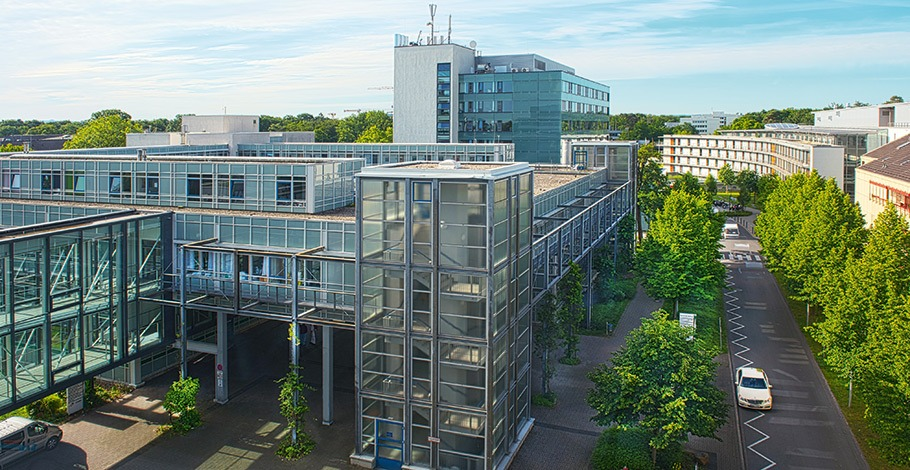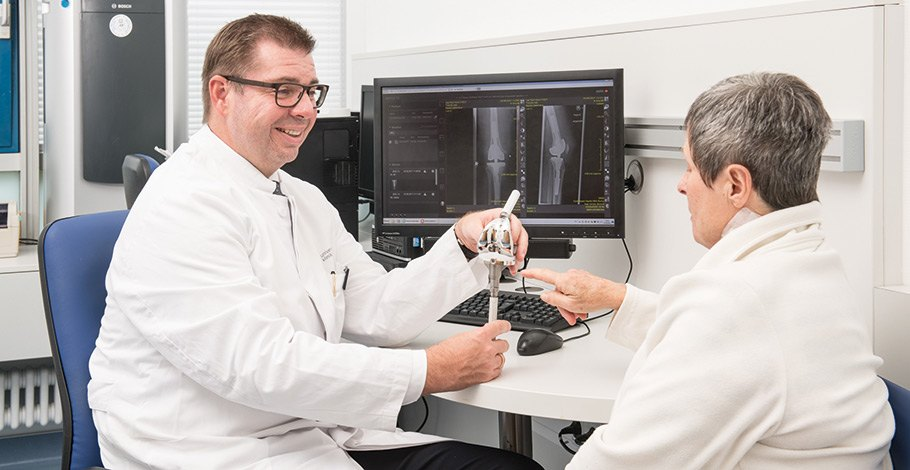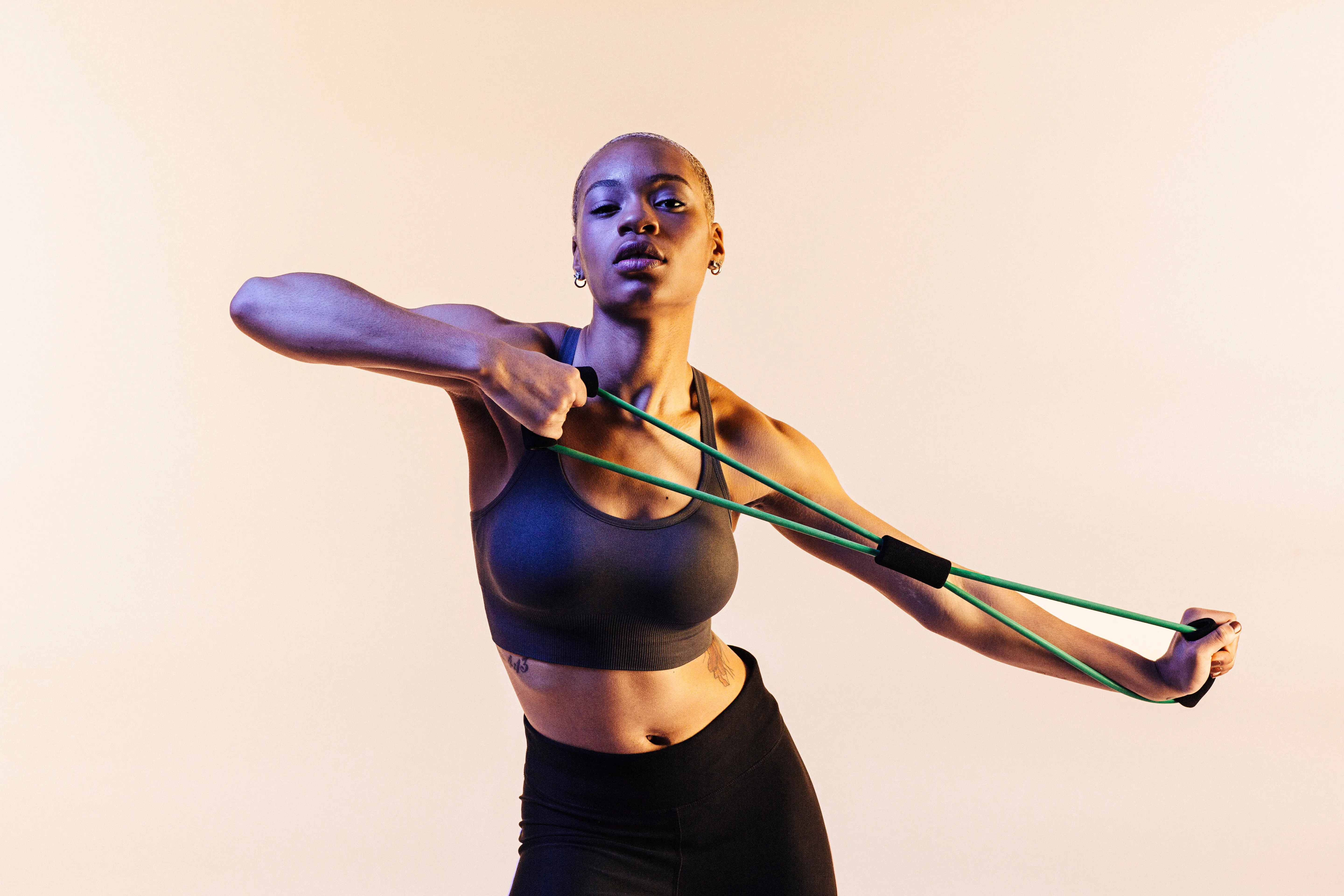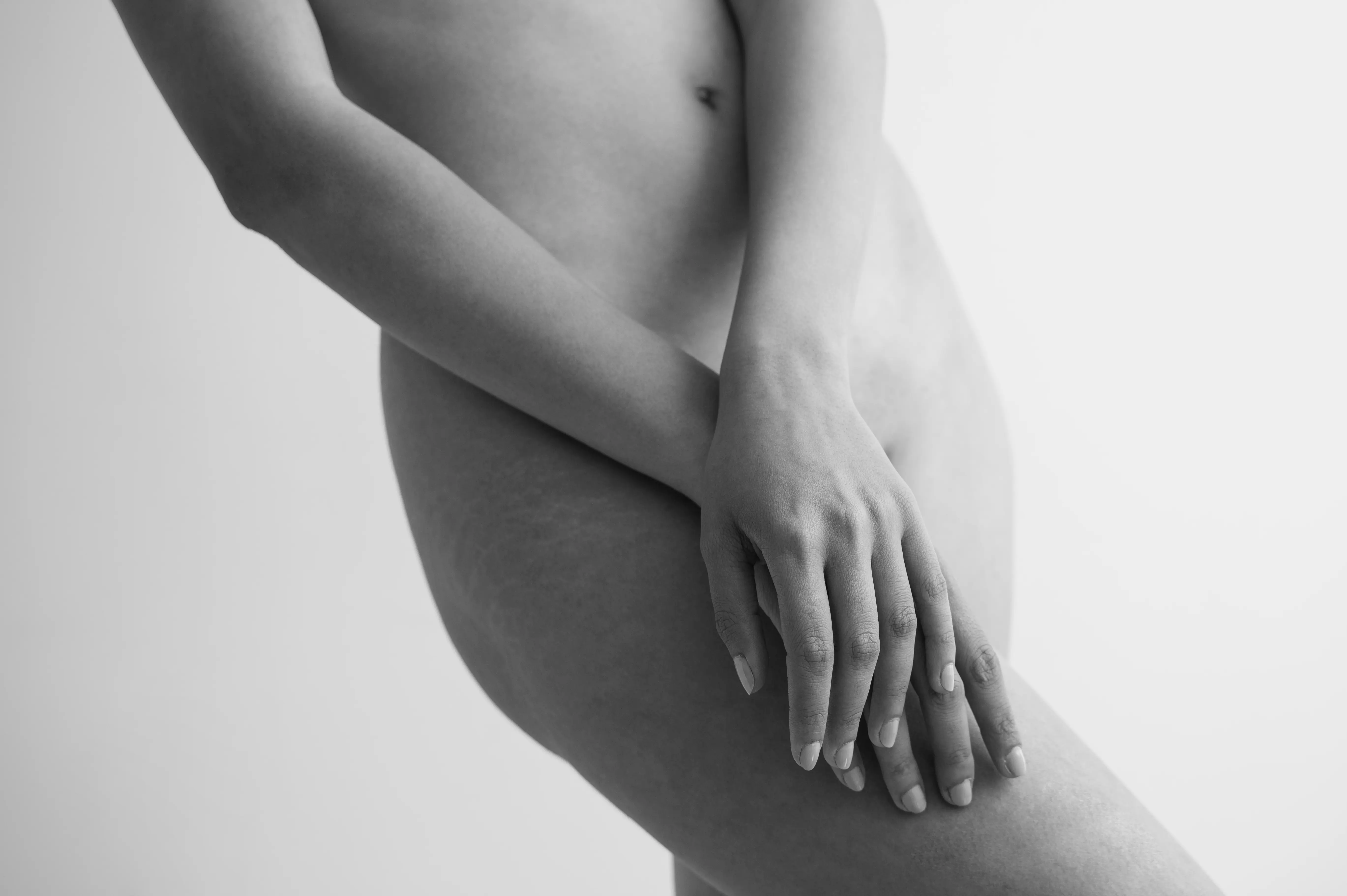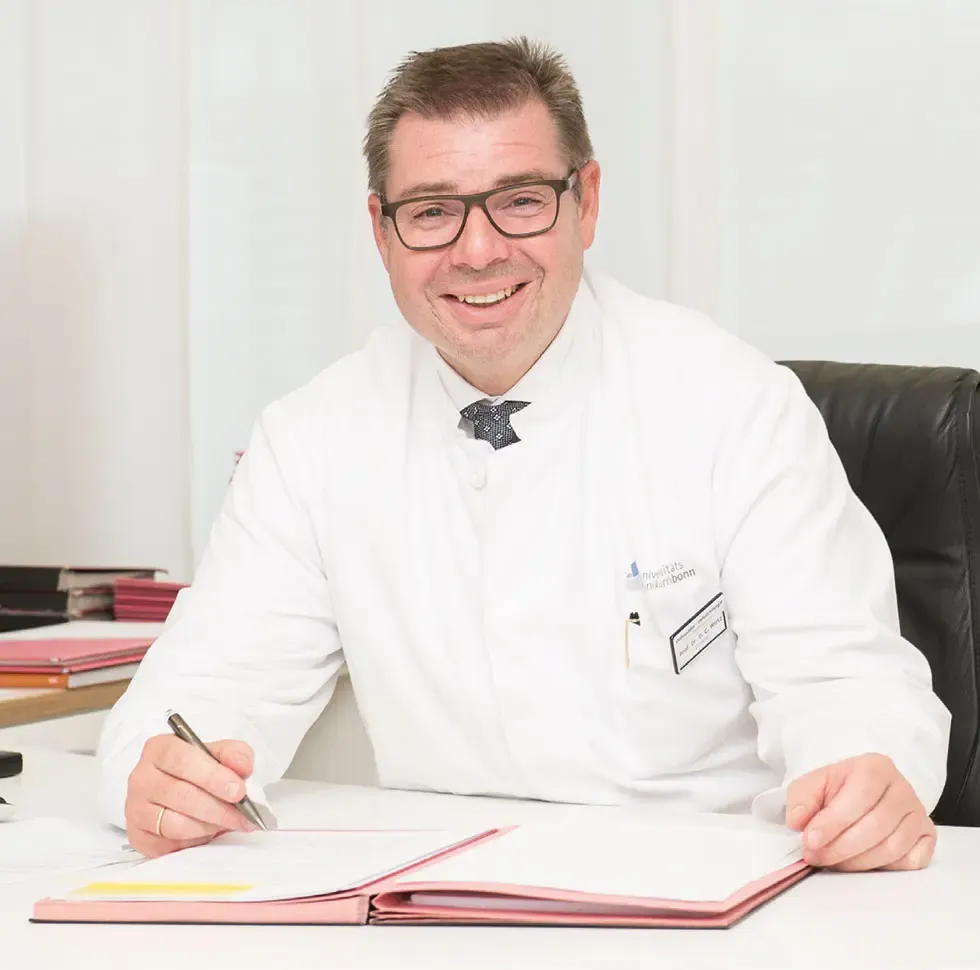
- Bonn
- Innovative Orthopedics & Sports Orthopedics
Prof. Dr. med. Dieter Christian Wirtz
Klinik und Poliklinik für Orthopädie und Unfallchirurgie
Services
Master of Revision Arthroplasty
In 2006, at just 39 years old, Professor Dieter Christian Wirtz was appointed as the youngest full professor of orthopedics and trauma surgery at the helm of the Bonn University Hospital. Even then, he was considered an experienced surgeon and highly competent advisor due to his extensive training. Since his start, "Bonn Orthopedics & Trauma Surgery" has grown steadily. Today, the clinic boasts more than 120 beds across several comfortably equipped wards and is the largest department of the university hospital: Last year, the doctors there implanted over 800 knee and hip prostheses, treated 4,500 inpatients, and 30,000 outpatients.
"As a maximum care clinic, patient safety is our top priority," explains Wirtz. This concern is addressed not only by having all specialties under one roof but also by implementing the highest hygiene standards throughout the clinic.
For over 25 years, Professor Wirtz's personal focus in clinical and scientific work has been on the treatment of loosened artificial joints. In Germany, you will find few facilities where doctors are as specialized in the revision of artificial joints as in Bonn: They replace around 500 joints annually, about half of them due to joint infection.
The revision operation in case of infection is considered the royal discipline in endoprosthetics. On one hand, the doctors have to treat the infection - depending on whether a single germ or various pathogens have infected the prosthesis and whether surrounding soft tissues like tendons or bones are also affected. On the other hand, the re-implantation of a prosthesis is a surgical challenge. In Bonn, a successful therapeutic procedure, the "Bonn Scheme," has been developed for this purpose.
However, the most common reason for a prosthesis revision is not an infection, but plain wear and tear. Artificial hip and knee joints loosen after 10 to 15 years due to mechanical stress. This loosening does not always pass unnoticed by the bone; often, the spare parts leave pronounced defects after removal. Here, one cannot simply insert a new standard endoprosthesis. Therefore, Wirtz has developed a modular system for hips and knees with a German manufacturer to reconstruct such defects in line with anatomy. Non-load-bearing bone defects are filled with donor bone and grow in. At load-bearing sites, Wirtz uses custom-fit titanium augments, which are then connected to the actual joint implant and fill the bone defect.
In the first orthopedic-trauma surgery geriatrics unit of the region, we specifically care for elderly, multi-morbid patients according to their needs.
Prof. Dr. med. Dieter Christian Wirtz
Not only in the operating room but also in the hospital's own research laboratory, the Bonn orthopedists are interested in bone defects and infected joints. Together with scientists from the nearby German Center for Infection Research (DZIF), they want to detect the pathogens of a joint infection before the operation in the future. "We are developing antibodies that dock to the surface of bacteria," explains Wirtz. "Combined with nuclear medical tracers, the infected areas light up in the computed tomography."
The marked areas can be targeted and removed very specifically during the surgery. With a second procedure, the surgeon should be able to determine during the operation whether the infected tissue has been completely removed. "As long as there are still germs hiding somewhere, for example in the depths of the femur, a new prosthesis will also become infected again," Wirtz explains. Only if the new implant site is germ-free can it be successful to reinsert a long-term functional prosthesis.
Ultimately, whether in the initial use or in the revision situation, endoprosthetics always aim for the restoration of quality of life. This also applies to the older, often multiply ill person. Therefore, in mid-2017, the clinic in Bonn opened the first orthopedic-trauma surgical geriatric ward in the region. Here, orthopedic surgeons work closely with internist geriatricians, specially trained nurses, and physiotherapists in an interdisciplinary team every day. With intensive and holistic care, it should be ensured that older people can live independently at home soon after the procedure with their new joint.
However, in order to fill such innovative clinic structures with life, not only professional expertise is needed, but above all motivated and committed personnel. "For my employees, friendly and empathetic communication is the top priority," emphasizes Wirtz. All clinic employees are involved in a service excellence training. "The patients should feel comfortable with us," says the clinic chief. Because "patient satisfaction contributes significantly to rapid recovery."
